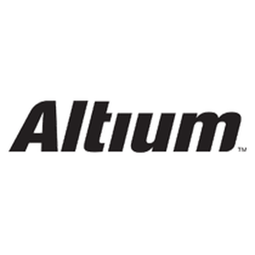Technology Category
- Application Infrastructure & Middleware - Data Exchange & Integration
- Platform as a Service (PaaS) - Data Management Platforms
Applicable Industries
- Electronics
- Equipment & Machinery
Applicable Functions
- Product Research & Development
- Quality Assurance
Use Cases
- Experimentation Automation
- Inventory Management
Services
- System Integration
- Testing & Certification
About The Customer
Omnisys Instruments is a Swedish SME known for its excellence in the development and production of complex, high-performance hardware products for the space industry and other specialized scientific instrument applications, including ground-based antennas and radiometers. Since 1993, the company has been engaged in the sequential development of several major projects for Europe’s scientific and space industry, ranging from ultra-reliable satellite power supply units to autocorrelation spectrometers. These complex designs incorporate advanced analog, microwave, ASIC, and power electronics, demanding exceptional capabilities from both the Omnisys engineers and the design tools they use.
The Challenge
Omnisys Instruments, a Swedish SME specializing in the development and production of complex, high-performance hardware products for the space industry, faced significant challenges in managing design revisions and component lifecycles. The company was involved in the sequential development of several major projects for Europe’s scientific and space industry, which incorporated advanced analog, microwave, ASIC, and power electronics. The extreme conditions found beyond Earth’s atmosphere amplified the normal constraints of electronics design, necessitating careful component selection and rigorous testing of designs to ensure high reliability after deployment. It was crucial for Omnisys to ensure that only approved components were used and thoroughly prototyped and tested designs were released to manufacture.
The Solution
Omnisys has been using Altium products since its inception in 1993, starting with Protel and continuing to the latest version of Altium Designer. Recognizing the potential for managing components and releases, Omnisys became an early adopter of Altium’s Vault technology. The Vault ensures that every component placed on a board maintains its identity and origin, and that all releases are managed. This solution perfectly fit Omnisys' needs, providing greater confidence in knowing their design models each have a managed lifecycle. The “Where-used” feature of the Vault allowed Omnisys to easily monitor the use of item revisions, speeding up the overall design process and facilitating efficient and confident late changes. Managing the Vault proved to be smoother than separately managing a SVN and collection of DBLibs, even with a team of 20+ engineers.
Operational Impact
Quantitative Benefit

Case Study missing?
Start adding your own!
Register with your work email and create a new case study profile for your business.
Related Case Studies.

Case Study
Smart Water Filtration Systems
Before working with Ayla Networks, Ozner was already using cloud connectivity to identify and solve water-filtration system malfunctions as well as to monitor filter cartridges for replacements.But, in June 2015, Ozner executives talked with Ayla about how the company might further improve its water systems with IoT technology. They liked what they heard from Ayla, but the executives needed to be sure that Ayla’s Agile IoT Platform provided the security and reliability Ozner required.

Case Study
IoT enabled Fleet Management with MindSphere
In view of growing competition, Gämmerler had a strong need to remain competitive via process optimization, reliability and gentle handling of printed products, even at highest press speeds. In addition, a digitalization initiative also included developing a key differentiation via data-driven services offers.

Case Study
Predictive Maintenance for Industrial Chillers
For global leaders in the industrial chiller manufacturing, reliability of the entire production process is of the utmost importance. Chillers are refrigeration systems that produce ice water to provide cooling for a process or industrial application. One of those leaders sought a way to respond to asset performance issues, even before they occur. The intelligence to guarantee maximum reliability of cooling devices is embedded (pre-alarming). A pre-alarming phase means that the cooling device still works, but symptoms may appear, telling manufacturers that a failure is likely to occur in the near future. Chillers who are not internet connected at that moment, provide little insight in this pre-alarming phase.

Case Study
Remote Temperature Monitoring of Perishable Goods Saves Money
RMONI was facing temperature monitoring challenges in a cold chain business. A cold chain must be established and maintained to ensure goods have been properly refrigerated during every step of the process, making temperature monitoring a critical business function. Manual registration practice can be very costly, labor intensive and prone to mistakes.

Case Study
Premium Appliance Producer Innovates with Internet of Everything
Sub-Zero faced the largest product launch in the company’s history:It wanted to launch 60 new products as scheduled while simultaneously opening a new “greenfield” production facility, yet still adhering to stringent quality requirements and manage issues from new supply-chain partners. A the same time, it wanted to increase staff productivity time and collaboration while reducing travel and costs.








